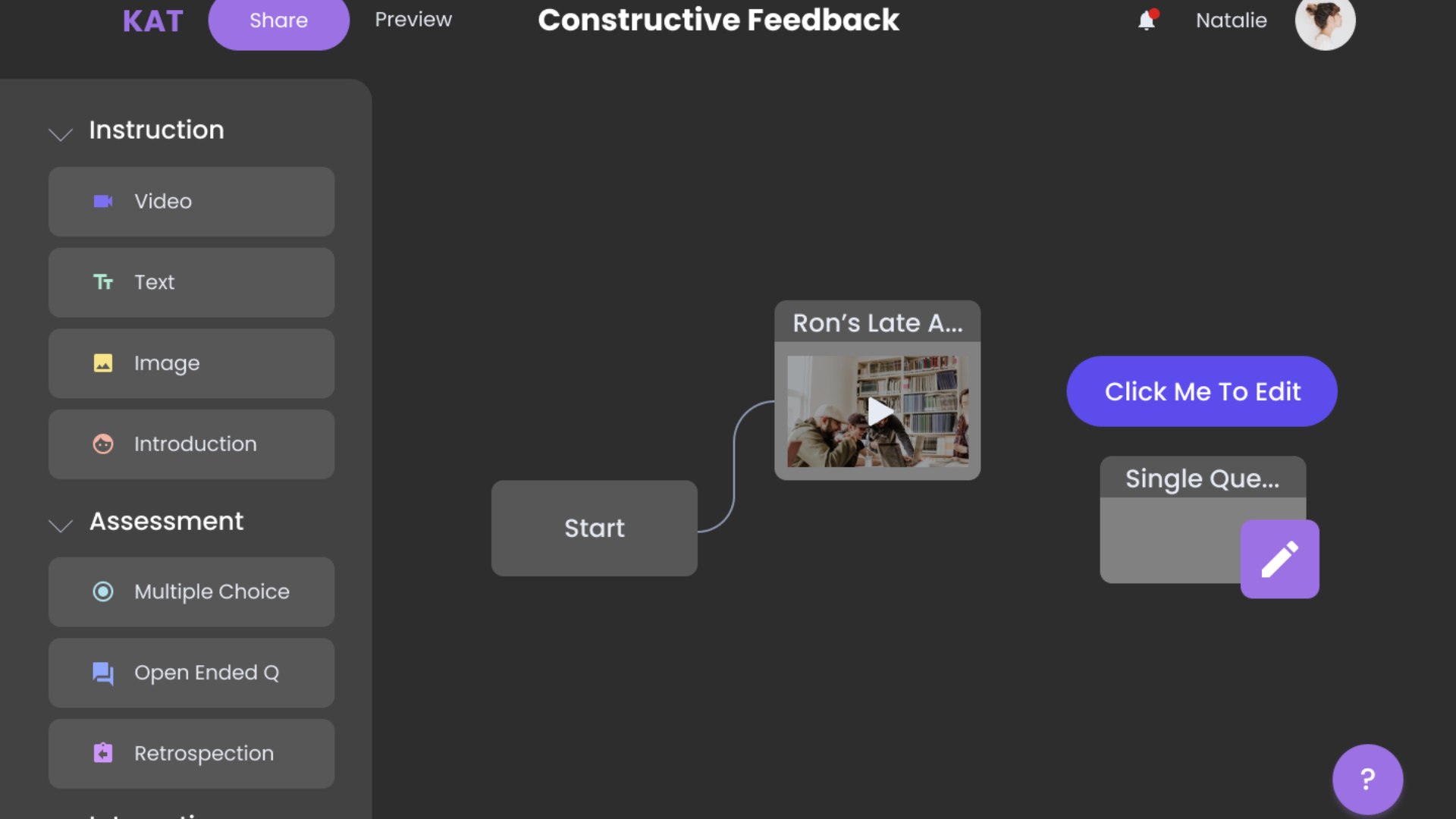Scenario Based Authoring Tool
Led the development of KAT (Kiwi Authoring Tool), an innovative authoring platform that enables educators to create engaging, scenario-based learning activities through an intuitive visual interface.

KAT (Kiwi Authoring Tool) - Making Education More Engaging
Project Overview
In collaboration with Western Governors University (WGU), I led the development of KAT (Kiwi Authoring Tool), an innovative authoring platform that revolutionizes how educational institutions create engaging formative activities. The project addressed a critical challenge in online education: the need for scalable, interactive, and authentic assessment tools that maintain high engagement levels while being easy to implement.
The Challenge
WGU, serving a large student population with its competency-based educational model, faced several key challenges:
- Limited ability to create engaging, scenario-based learning activities at scale
- Need for automated assessment capabilities due to high student-to-instructor ratios
- Difficulty in providing timely, personalized feedback to students
- Complex technical requirements for creating interactive content
My Role and Approach
As the Product Manager, I:
-
Led User Research: Conducted extensive interviews with instructional designers, assessment developers, and students to understand pain points and needs.
-
Developed Product Strategy: Created a comprehensive product roadmap aligning stakeholder needs with technical feasibility and business goals.
- Managed Development Process:
- Implemented an iterative development approach with three distinct phases
- Coordinated between design, development, and stakeholder teams
- Conducted regular testing and feedback sessions
- Feature Prioritization: Used data-driven decision making to prioritize features based on user impact and development effort.
The Solution
KAT emerged as a specialized authoring tool that enables:
- Visual creation of branching scenarios through an intuitive drag-and-drop interface
- Integration of multimedia elements including videos, images, and interactive assessments
- Automated feedback mechanisms with support for various assessment types
- Skills tracking and learning outcome measurement
- Collaborative content creation with sharing capabilities
Innovation Highlights
-
Visual Scenario Builder: Pioneered a novel approach to creating branching scenarios without requiring technical expertise.
-
Smart Feedback System: Implemented an intelligent feedback mechanism that adapts to student responses.
-
Skills Framework: Developed a comprehensive skills tracking system aligned with competency-based education principles.
Impact and Results
The project achieved significant outcomes:
- User Satisfaction: 80% of instructional designers rated the tool 4 or higher out of 5 for ease of use
- Efficiency Gains: Reduced content creation time by approximately 60%
- Engagement Metrics: Student engagement scores increased by 35% in pilot programs
- Scalability: Successfully implemented across multiple departments at WGU
Key Learnings
-
User-Centered Design: The success of educational technology heavily depends on understanding both educator and student needs.
-
Iterative Development: Regular testing and feedback cycles were crucial for refining features and ensuring usability.
-
Change Management: Implementing new tools requires careful consideration of existing workflows and adequate support for adoption.
Future Development
The project laid groundwork for several promising future developments:
- Integration with AI-powered assessment tools
- Expanded assessment type library
- Enhanced data analytics capabilities
- Cross-platform mobile support
Technical Details
Built using modern web technologies, KAT features:
- React-based frontend for dynamic user interface
- Modular architecture supporting easy feature additions
- Robust API design for future integrations
- Cloud-based collaborative features
Conclusion
KAT represents a significant advancement in educational technology, demonstrating how thoughtful product management can transform complex technical requirements into an accessible, user-friendly solution. The project’s success highlights the importance of balancing innovation with practical usability in educational software development.
This project was completed as part of the METALS program at Carnegie Mellon University in collaboration with Western Governors University.
